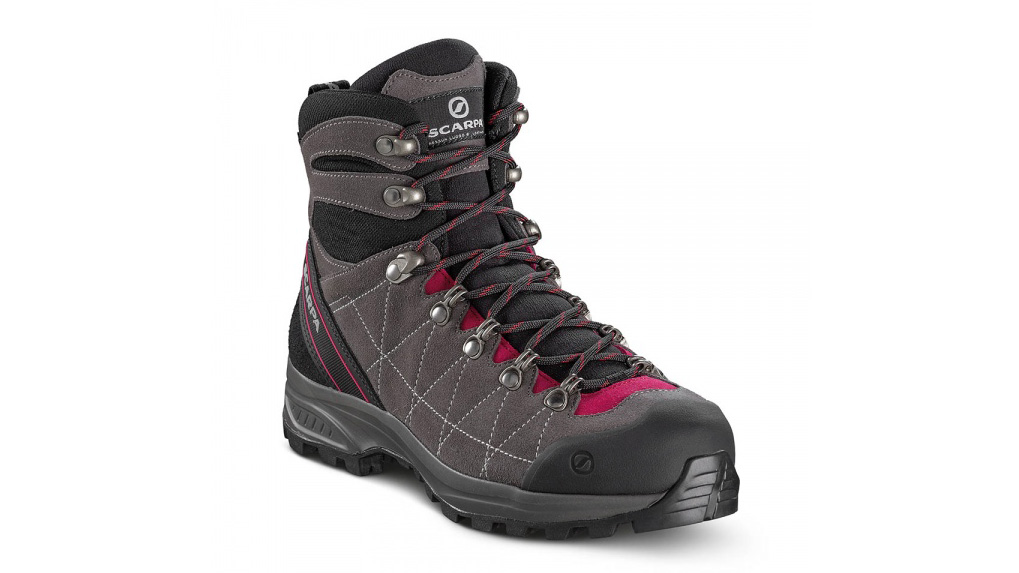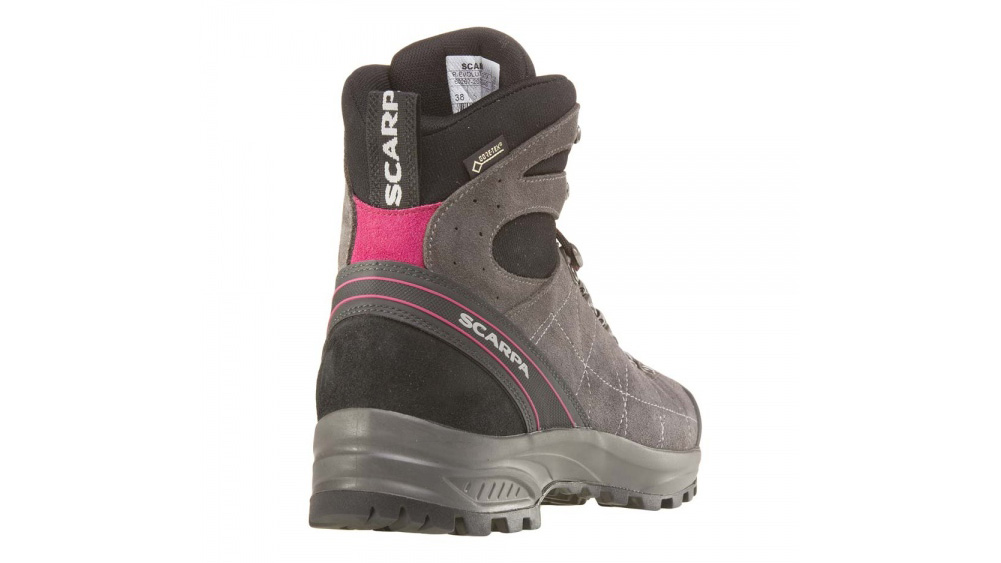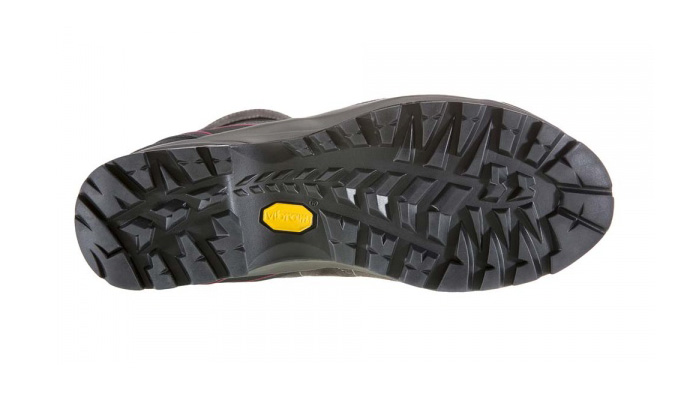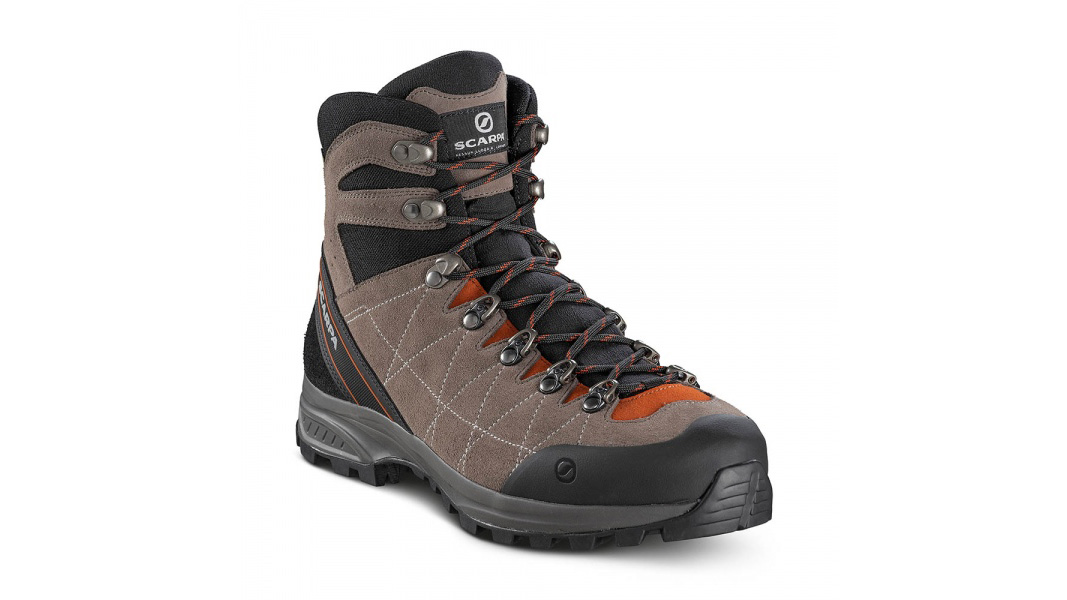Scarpa R-Evo GTX hiking boots review
Rugged construction plus a supportive and comfy design mean the Scarpa R-Evo GTX hiking boots can tackle any terrain with ease


The Scarpa R-Evo GTX hiking boots offer oodles of support, comfort and traction, plus quality, rugged construction. These are the ideal choice for rugged 3- to 4-season fell walking adventures.
-
+
High cut at the ankle provides exceptional support
-
+
Shock-absorbing and traction-packed sole
-
+
Comfortable and supportive about the foot
-
-
There are more lightweight options
Why you can trust T3

Scarpa's R-Evo GTX hiking boots mean business, providing exceptional levels of support and comfort for a remarkably low weight. They're made from water-resistant suede and synthetic fabric, with a Vibram Biometric Trek and GORE-TEX lining to keep them waterproof.
We tested the women's version for this review (they're currently sitting right at the top of our ranking of the best women's hiking boots), but there's also a men's option with larger sizes and a different colourway (check out our guide to the best hiking boots for men for alternative options here).
The weight is the first thing that's noticeable when you unbox them; the Scarpa R-Evo GTX boots feel significantly lighter than other fell and hill walking boots we've tried. This means after many long hours of walking, you don't have that extra weight dragging your legs down.



The high cut on the ankle provides great support without feeling bulky or inhibiting movement too much, and anyone who has weakness or injury in this joint will really benefit from this design. As for the fit on the rest of the foot? Well, it's got to be the best-fitting and most comfortable boot we've tried in a long while. It conforms well to the foot, providing great instep support, security at the heel to eliminate heel-lift and thereby massively minimising the risk of blisters, and a nice amount of wiggle room for the toes.
A chunky Vibram sole sucks up impact and damps it down which takes another fatiguing factor away from your feet, as well as having a decent tread with moderate lugs that help with traction in muddy and slick conditions. Scarpa also states that these boots are resoleable, so if you look after them they should be usable for years – good news for your pocket and the planet.

The men's version
While Scarpa doesn't highlight these boots as a winter hiking option as it has other more specific products in its range, for the vast majority of UK-based hikes where the weather stays relatively mild, these boots will be more than up to the job. One small niggle is the laces, which are just about long enough to lace up with a double bow but no more; we like to have a little extra lace in case it wears or snaps.
All in all, there's so much to be impressed with in these boots; the construction, the support, the comfort and the ruggedness. If you're planning a backpacking, camping or hill-walking mission on rough terrain, these are the boots for you.
Find out more on the Scarpa website.
Sign up to the T3 newsletter for smarter living straight to your inbox
Get all the latest news, reviews, deals and buying guides on gorgeous tech, home and active products from the T3 experts
Writer, journalist and Spindrift Podcast host Aoife has over 10 years product-testing experience, and has written and reviewed for Red Bull, MBUK, Trek UK, Bikeradar, BikePerfect, Cycling Plus, Fit&Well and of course T3 (and a few others). A keen cyclist, mountain biker and outdoor adventurer, you’ll usually find her out in the forests or up a mountain somewhere.
-
 Leaked AirPods prototype looks like Nothing... literally
Leaked AirPods prototype looks like Nothing... literallyAnd we are here for them
By Britta O'Boyle Published
-
 OnePlus Watch 3 lands in the UK with a flurry of freebies and a huge discount
OnePlus Watch 3 lands in the UK with a flurry of freebies and a huge discountThe new titanium-clad smartwatch brings 120-hour battery life, ECG health checks, and some serious launch offers
By Matt Kollat Published
-
 Future YouTube feature could put an end to your doomscrolling
Future YouTube feature could put an end to your doomscrollingAnd that's something we would love to see
By Britta O'Boyle Published